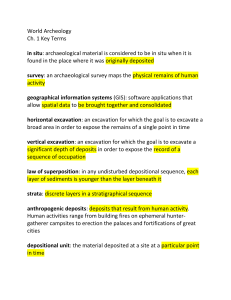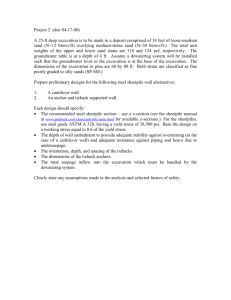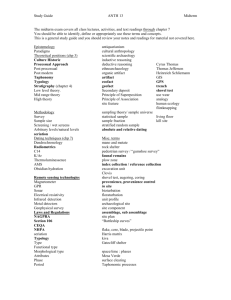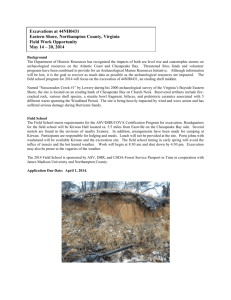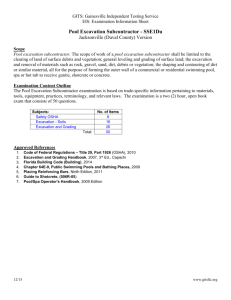Seasonal Taskscapes of the French Migratory Fishery in Northern
advertisement
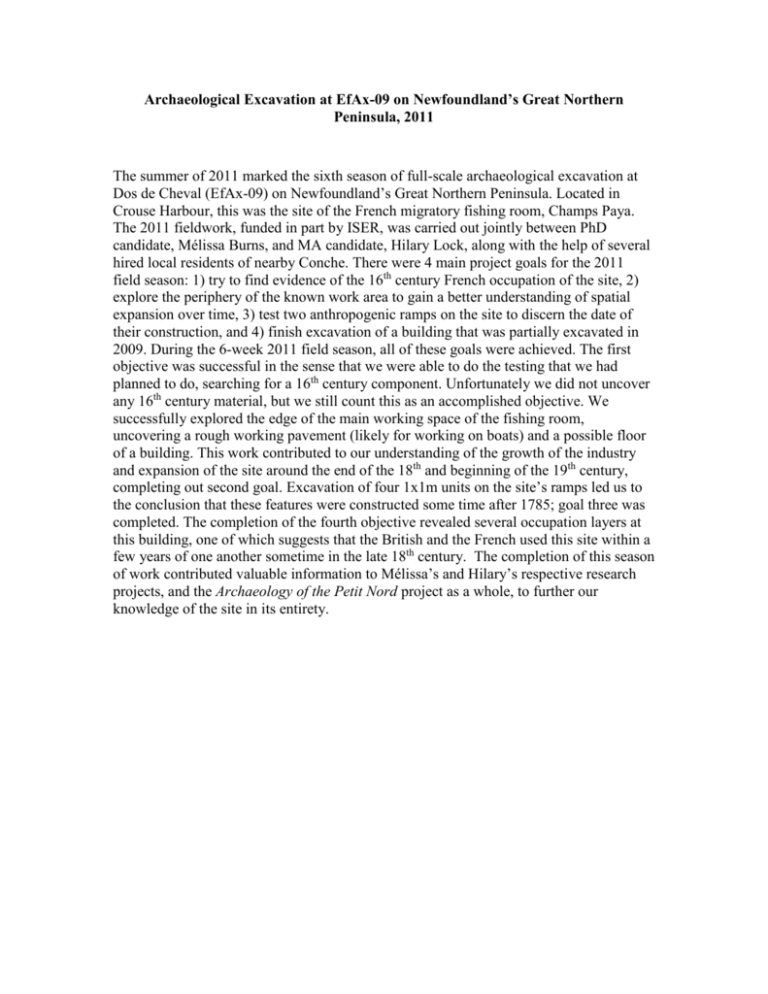
Archaeological Excavation at EfAx-09 on Newfoundland’s Great Northern Peninsula, 2011 The summer of 2011 marked the sixth season of full-scale archaeological excavation at Dos de Cheval (EfAx-09) on Newfoundland’s Great Northern Peninsula. Located in Crouse Harbour, this was the site of the French migratory fishing room, Champs Paya. The 2011 fieldwork, funded in part by ISER, was carried out jointly between PhD candidate, Mélissa Burns, and MA candidate, Hilary Lock, along with the help of several hired local residents of nearby Conche. There were 4 main project goals for the 2011 field season: 1) try to find evidence of the 16th century French occupation of the site, 2) explore the periphery of the known work area to gain a better understanding of spatial expansion over time, 3) test two anthropogenic ramps on the site to discern the date of their construction, and 4) finish excavation of a building that was partially excavated in 2009. During the 6-week 2011 field season, all of these goals were achieved. The first objective was successful in the sense that we were able to do the testing that we had planned to do, searching for a 16th century component. Unfortunately we did not uncover any 16th century material, but we still count this as an accomplished objective. We successfully explored the edge of the main working space of the fishing room, uncovering a rough working pavement (likely for working on boats) and a possible floor of a building. This work contributed to our understanding of the growth of the industry and expansion of the site around the end of the 18th and beginning of the 19th century, completing out second goal. Excavation of four 1x1m units on the site’s ramps led us to the conclusion that these features were constructed some time after 1785; goal three was completed. The completion of the fourth objective revealed several occupation layers at this building, one of which suggests that the British and the French used this site within a few years of one another sometime in the late 18th century. The completion of this season of work contributed valuable information to Mélissa’s and Hilary’s respective research projects, and the Archaeology of the Petit Nord project as a whole, to further our knowledge of the site in its entirety.



